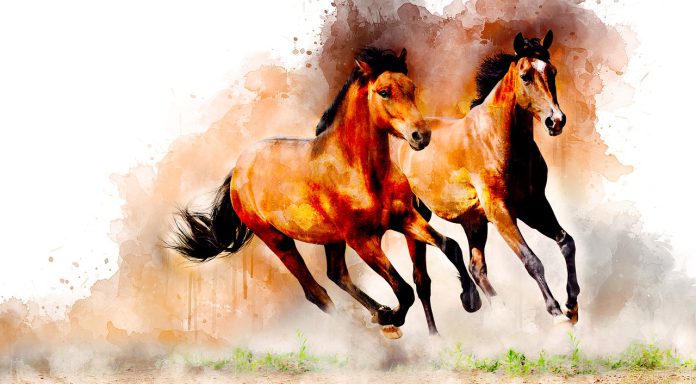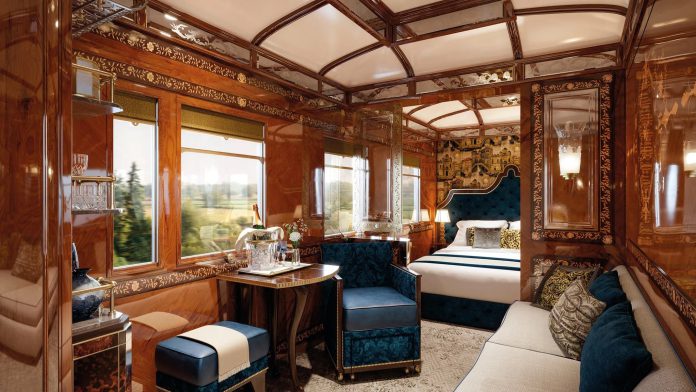The history of equine art dates back thousands of years, when horseback riding, carriage rides, and wars were commonplace. It can be traced back to the cave paintings in Ancient Egypt and Classical Greece, which were symbolic of the owner’s wealth, power, and patronage.
In Greece, horse drawings were made in geometric patterns. Romanticism in the 18th and 19th centuries heightened interest in equine art. The beauty of paintings by Paolo Uccello, Benozzo Gozzoli, and Leonardo da Vinci enchanted viewers, who were charmed by the combination of dark and light brush strokes highlighting different shades of brown. English painter George Stubbs and American artist Franklin Voss captured the rider sitting on horseback and gazing out at the vast lands
An artist’s work gives a glimpse of his/her thinking through the colors, structures, smooth lines, and stern planes. George Stubbs’ Whistlejacket is perhaps the most well-known painting in equine art. The history of equine art dates back thousands of years, when horseback riding, carriage rides, and wars were commonplace. It can be traced back to the cave paintings in Ancient Egypt and Classical Greece, which were symbolic of the owner’s wealth, power, and patronage.

In Greece, horse drawings were made in geometric patterns. Romanticism in the 18th and 19th centuries heightened interest in equine art. The beauty of paintings by Paolo Uccello, Benozzo Gozzoli, and Leonardo da Vinci enchanted viewers, who were charmed by the combination of dark and light brush strokes highlighting different shades of brown. English painter George Stubbs and American artist Franklin Voss captured the rider sitting on horseback and gazing out at the vast lands
An artist’s work gives a glimpse of his/her thinking through the colors, structures, smooth lines, and stern planes. George Stubbs’ Whistlejacket is perhaps the most well-known painting in equine art. Napoleon, known for his vigor, authority, and leadership, could be seen in action in the command over the horse and the bond he shares with his horse. Wassily Kandinsky, a Russian painter, began his art studies at the age of 30 and expressed through colorful shapes, molded together with finesse, adding to the richness of his designs.
A painter creates while a photographer exposes. When Eadweard Muybridge’s prints were viewed, they confirmed for the first time that when a horse runs, all four legs are off the ground at the same time. They also demonstrated that the popular depiction of a racehorse in motion with both front and back legs outstretched at the same time was grossly inaccurate.
CONTEMPORARY EQUINE ART
Many modern painters and artists have captured the beauty of equine art, highlighting its majestic, dangerous, thrilling essence combined with a soft vulnerability, deconstructing movements, simplifying the shapes, and identifying the dynamism involved in the game. French artist Marie Ackers’ ideas of art are instilled with clear-cut designs highlighting the bodily shapes and structures of the animal, using a single color.

Giulia Vesentini, master mosaicist, casts a bright glow from sun rays, together with unique, edgy horse forms. Haitz de Diego from Spain brings any painting to life with his master strokes. His paintings stand out due to their relatability and originality, transporting viewers to open fields surrounded by greenery, with the horses running to and fro, hair whipping in the wind, bodies moving fast, and making cutting noises in the air.
The Equestrian Artists’ Society recently organized its annual exhibition, which featured equestrian paintings from the 18th and 19th centuries. The paintings by Sam Sallet, 1966, and Gean Bowman, 1980, showcased equine art trends.
Lee Sung-Kun, a famous South Korean artist, says: “Horses are a symbol of bravery, freedom, speed, endurance, and strength. My horses represent Vietnam’s spirit and strong will, which is always looking forward.”
Max Ernst’s Horse and Cow painting from 1919, discovered at Art Basel, captures the overall terrain, with floating houses and trees in the background, through a cartoonish style. Michael Borremans’ The Horse, 2015, and Zeno X Gallery, Horse by Yinizar, 2015 are other examples of contemporary equine art.
Hyderabad’s Kalakriti Society’s exhibition titled “Where did the horses go?” showcased a mixture of contemporary and ancient equine designs. Diptish Ghosh Dastidar’s painting, dated 2006, presented an illusionary image of a horse standing on the screen. Vasundhara Tewari Broota’s drawings, with light strokes of the brush, interpret the surreal mixing of colors, a painfully alluring blend.
Horses represent a culture associated with power, freedom, valor, and strong focus. The art world will continue to remain mesmerized by the equine world.





